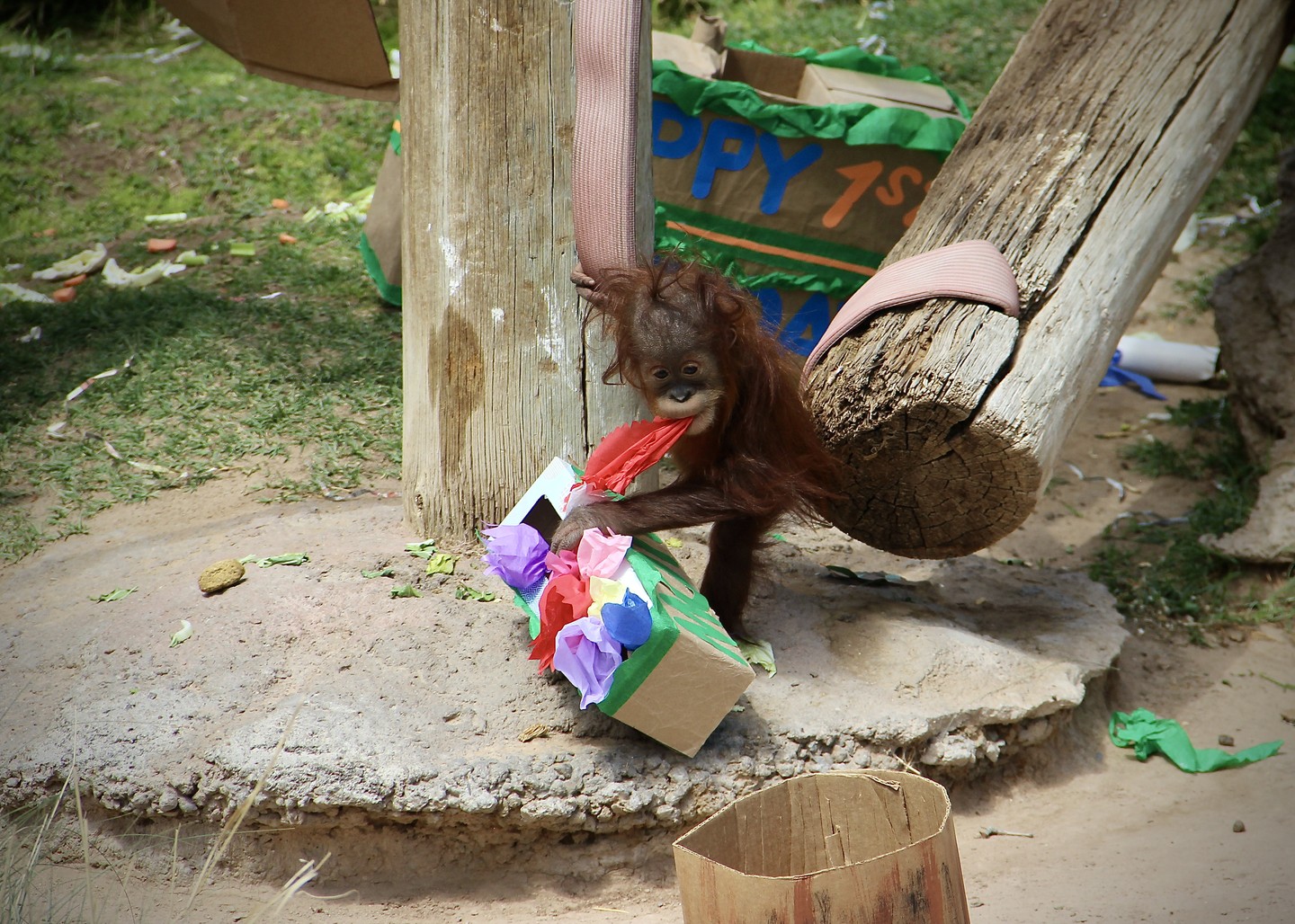A Peek into the Treetops: The Enchanting World of Baby Orangutans
Perched high in the lush canopies of the Borneo and Sumatran rainforests, a fascinating spectacle of nature unfolds. Imagine yourself gazing up at a baby orangutan. A fiery tuft of fur against the verdant backdrop, it clings to its mother, curious eyes mirroring the beauty of the wild.
Now, let’s go on a captivating adventure to unravel the life of these delightful creatures. With their distinct red-orange fur, humanoid features, and adorable clumsy disposition, baby orangutans, also known as infants, are heart-stealers, and their story is as unique as their vibrant coat.
An orangutan’s birth is a rare spectacle. Mothers, typically solitary creatures, welcome a newborn after an 8 to 9-month gestation period, almost mirroring human pregnancies. Talk about a similarity that crosses species boundaries!
Infant orangutans are the epitome of dependency, spending the first two years of their lives attached to their mothers like fuzzy little backpacks. Mothers, conversely, are the epitome of patience, offering a love-soaked masterclass in climbing, nest-building, and fruit-foraging.
The bond is undeniably profound. Baby orangutans drink their mothers’ milk during their first six years, the most prolonged lactation period of any wild mammal. In this intense apprenticeship, they learn survival skills, for the jungle is both a playground and a classroom.
The learning curve doesn’t stop there! Have you ever heard of a primate with eight years of childhood? Well, you have now! In their growth journey, baby orangutans transition from dependent infants to explorative juveniles. Their curious nature propels them to venture further from their mothers, playing with siblings and learning to socialize. This phase is a hub of comical tumbles, naughty play, and relentless trials, setting the foundation for their adult life.
Like humans, these youthful primates use tools, a testament to their intelligence. Ever seen a rainforest dweller use a leaf as an umbrella? Or a stick to extract honey from a hive? If you have, you’ve likely witnessed a young orangutan applying the skills learned from their observant years.
However, the world of baby orangutans isn’t
all sunshine and ripe fruit. They face significant threats in the wild. Deforestation, driven by logging and palm oil plantations, is ravaging their natural habitat at an alarming rate. Poaching, too, leaves its ghastly imprint, with baby orangutans often targeted due to their high demand in the illegal pet trade. These human-driven factors have pushed both Bornean and Sumatran orangutans toward the brink of extinction.
But here’s the silver lining. Many conservation organizations, fueled by a network of passionate individuals, strive tirelessly to turn the tide. Rehabilitation centers like the Sepilok Orangutan Rehabilitation Centre in Borneo or the Sumatran Orangutan Conservation Programme are stepping stones towards this goal. These centers rescue orphaned and displaced baby orangutans, provide them with necessary medical care, and coach them in essential survival skills through ‘forest schooling.’ After a specific rehabilitation period, they are reintroduced to protected rainforest regions, getting a second chance to live wild and free.
Worldwide zoos also contribute significantly to this conservation journey. Partnering with organizations and initiatives, they create awareness about these charismatic apes and their challenges, fostering an environment of education and empathy.
As we delve into the world of baby orangutans, we realize that their survival is intertwined with the health of the rainforest ecosystem and, in turn, the health of our planet. Every effort to conserve them contributes to a more balanced, biodiverse world.
In the end, the enchanting narrative of baby orangutans is a saga of survival, intelligence, and the unyielding resilience of nature. It’s a tale that compels us to respect the delicate balance of our ecosystem, urging us to preserve the world where these fuzzy orange infants swing freely, high up in the emerald canopies.


